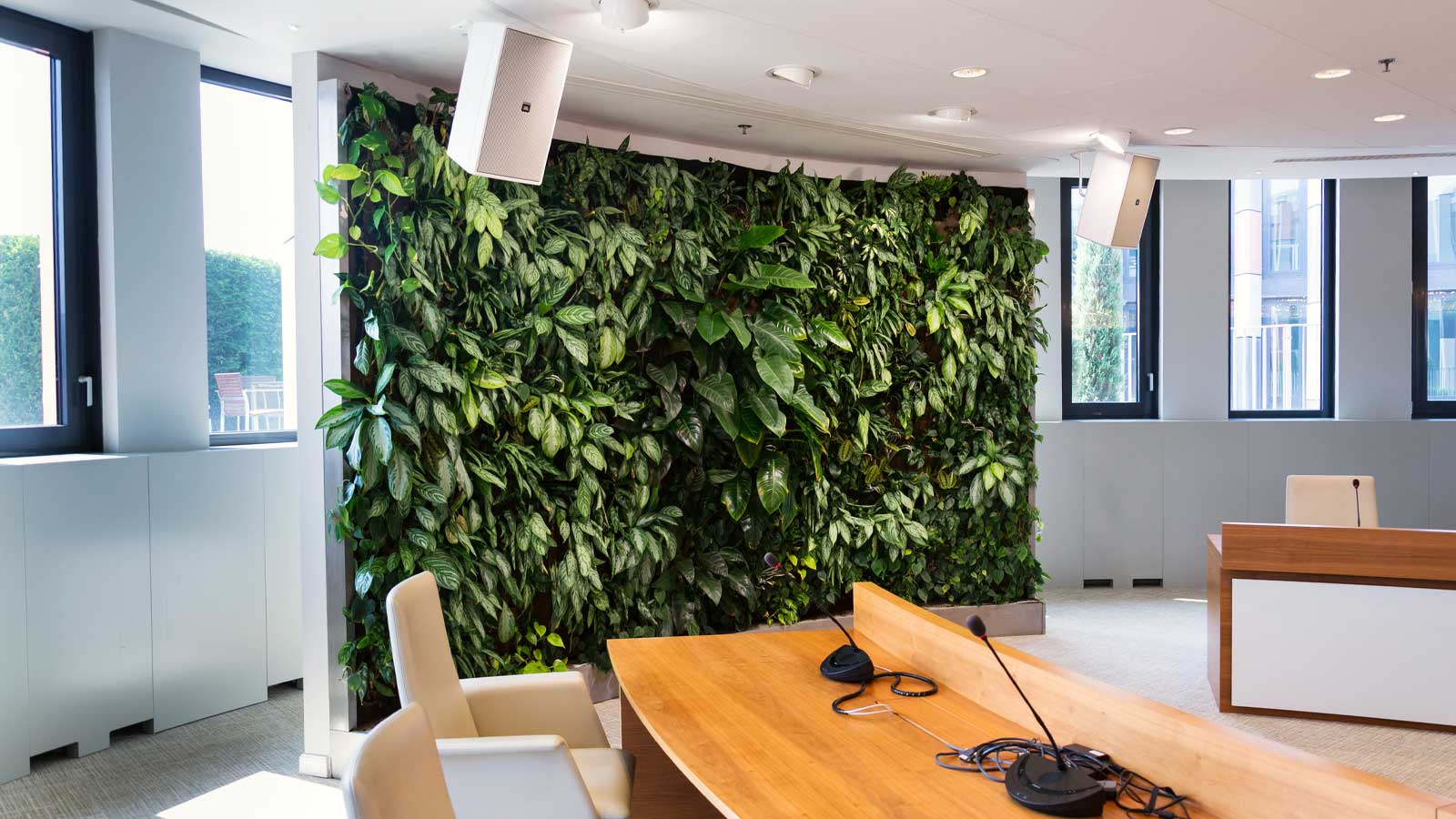Using Plants for Privacy and Noise Reduction in Open Office Spaces
Employees in an open-plan office often complain that their workplaces are noisy and disruptive. They also lack the solitude sometimes needed for optimal productivity. Here’s how plant life and biophilic design can enhance privacy in a workspace, and help dial down the volume in a noisy environment.
-Apr-26-2024-01-35-50-7428-PM.jpg?width=2776&height=2082&name=Image%20(3)-Apr-26-2024-01-35-50-7428-PM.jpg)
In a post-Covid environment, open-plan offices have become the most functional way to lay out an office space best suited to hotdesking or a hybrid work environment. However, the noise pollution and lack of privacy associated with open-plan environments often undermines their functionality.
Loud phone calls and relentless office chatter can make it hard for people to focus. Noise impairs concentration which directly impacts productivity. Moreover, work-related conversations that need to remain private, such as HR discussions or contract negotiations, are impossible to have in an open workspace.
So what can be done to bridge the gap between the pros and cons of open-plan offices? Here, we explore the benefits of incorporating plants into your office space for increased privacy and lowered noise levels.
Combating Noise Pollution with Biophilic Design
 Biophilic design – the practice of integrating elements of nature into the built environment – is typically lauded for its aesthetic functionality, as well as its capacity to impact the wellbeing and productivity of building occupants.
Biophilic design – the practice of integrating elements of nature into the built environment – is typically lauded for its aesthetic functionality, as well as its capacity to impact the wellbeing and productivity of building occupants.
Bringing nature into your indoor office space can also combat air pollution in your building, owing to plants’ natural ability to oxygenate an area and help remove toxins from the environment. But, did you know that plants can also work to absorb sound in a noisy area?
Without walls or solid partitions, open-plan offices often lack proper sound insulation which can make for a noisy and distracting office space. But, as the unsung hero of combating noise pollution, indoor plants work as natural sound absorbers. Thanks to their biomass and natural density, plants effectively absorb echoes and dampen reverberation, resulting in a calmer and quieter workspace, even when it’s open plan.
A Green Solution for Increased Privacy
 Through biophilic design and green architecture, incorporating plant life, such as tall potted plants or living walls, into your open-plan office can visually divide a space for increased privacy. They act as partitions that not only provide acoustic insulation, but also help delineate space in an open setting.
Through biophilic design and green architecture, incorporating plant life, such as tall potted plants or living walls, into your open-plan office can visually divide a space for increased privacy. They act as partitions that not only provide acoustic insulation, but also help delineate space in an open setting.
Living walls and green office partitions, like moss panels, plant-laden screens and dividers, or even stackable planters, are great natural barriers. They eliminate the need for traditional high-density cubicles; dull, gray partitions; and solo offices that unnecessarily consume floor space.
Plant partitions can also give employees a sense of their own space in an open-plan environment. Architecturally, plants help a space breathe in a way that counteracts the claustrophobia of walled-in solo offices.
Research shows that plant life reduces employees’ perceptions of crowding in an open-office environment, while increasing their perception of privacy. Plants also contribute to a more relaxed and comfortable atmosphere in the office, reducing employee stress by 12% and generally improving employees’ overall work disposition. This fosters a positive sense of wellbeing among workers.
The Best Indoor Plants for an Open Office
Careful plant selection is crucial when it comes to indoor office plants. You want to make sure that they’re easy to maintain but also serve you best in terms of aesthetics and functionality.
So what are good office plants for an open-plan environment? Here are some indoor species that we often recommend (though this can change from client to client):
Snake Plant (Sansevieria):
Also known as as Mother-in-Law’s Tongue, snake plants have attractive green leaves, which sometimes have yellow on the edges. Snake plants thrive in low light conditions and can grow quite tall, making them attractive focal points in an office space.
Peace Lily (Spathiphyllum):
With lush, dark green foliage and striking white blooms, peace lilies are a popular choice for offices that want to keep things elegant and understated. They’re also known for their ability to remove toxins from the air, which is a definite pro when it comes to crowded spaces.
ZZ Plant (Zamioculcas zamiifolia):
Known to be low maintenance, the resilient and drought-resistant ZZ plant varies in size, depending on your needs. These plants thrive in indirect light, though they can adapt to different lighting and workspace conditions.
Philodendron:
With its trailing vines and heart-shaped leaves, philodendrons are versatile climbers that can be displayed on screens or panels, in hanging baskets or on desktops. These plants feature lush foliage that are perfect for natural sound absorption.
Other Recommended Office Plants
As a leading provider of biophilic design solutions, we can recommend several other plant species that mitigate noise pollution and help create divisions that allow for some privacy in an open workspace.
Our plant design specialists can also advise you on different types of green wall systems, and how they might work best in your space. Whether it’s a freestanding, modular, cassette, trellis or tray system, the various types of living walls we offer can each serve you in different ways. Whether you’re looking to regulate movement and flow in your office space, establish natural divisions for enhanced privacy, or simply want to absorb disruptive noise, we can help you find the right solution for your business.
Visit our blog if you’d like to know more about what you can expect from a consultation with Natura.




